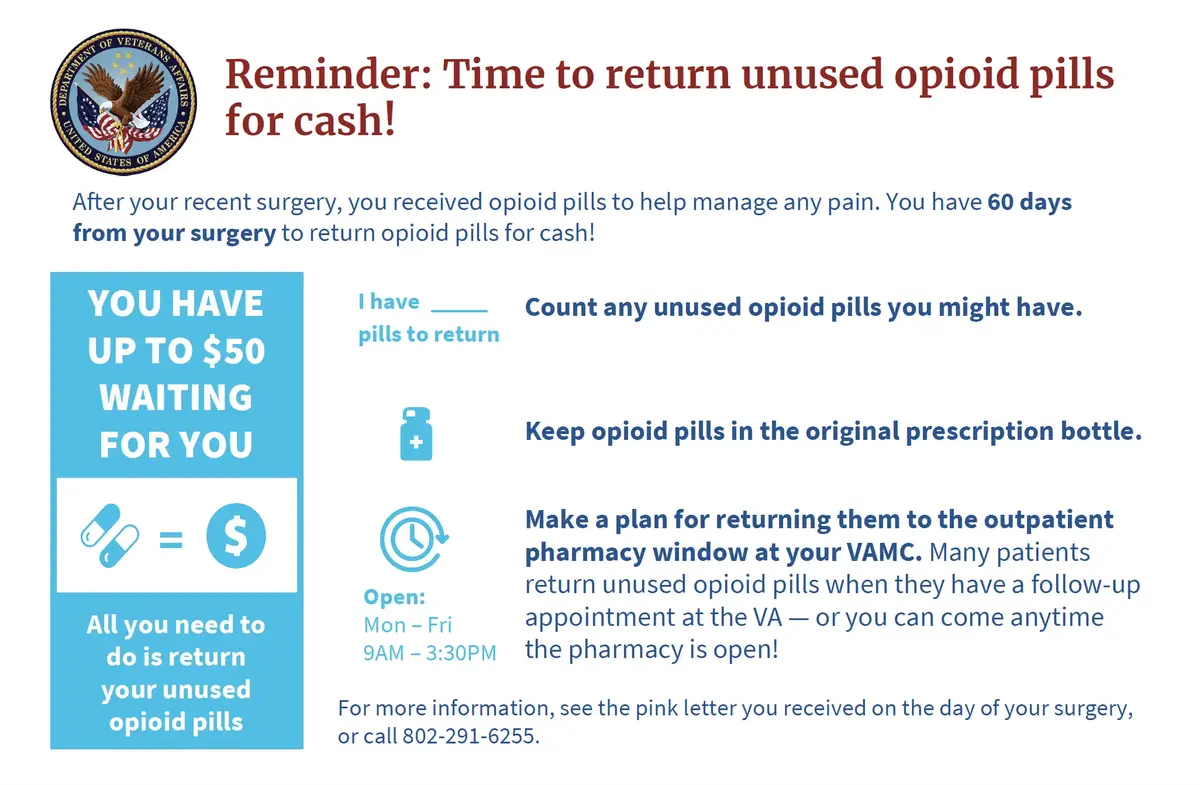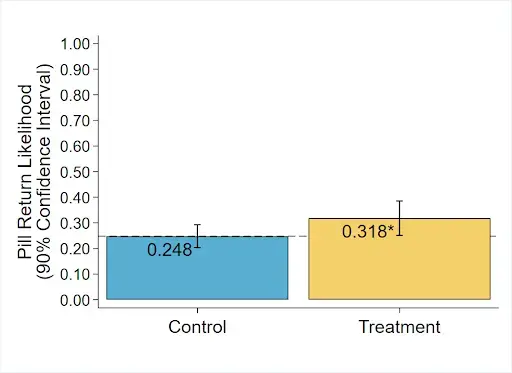Enhancing the effect of cash buyback on the return of unused opioids

Pill container
What was the challenge?
Unused prescription opioid pills stored in the home can contribute to opioid abuse. It’s estimated that between one quarter and three quarters of patients prescribed opioids either misplace unused pills or store them for future use, presenting a risk to those who may later find them. In an effort to encourage proper disposal, the White River Junction Veterans Affairs Medical Center implemented a cash buyback program, called “Cash for Your Stash,” in which patients who return unused opioid pills to the VA pharmacy can receive $5 per returned pill, up to $50. The program is offered to patients who receive one-time, short-term prescriptions for opioids to manage pain following outpatient surgery.
What was the program change?
We designed a treatment involving two reminder cards — one given to the patient when they receive their prescription opioid pills, and another mailed to the patient approximately one week later. The cards were designed to make information available to the patient at a time when they can take action, and to motivate action by framing the incentive as money waiting to be claimed.
Figure 1. Card mailed to treatment patients a week after surgery

How did the evaluation work?
Patients in a treatment condition received the cards in addition to the standard information about the buyback program. Patients in a control condition received the standard information only. Patients were randomly assigned to treatment and control conditions by the week of their surgery; within each two-week interval during the field period, one week was randomly assigned to treatment, and the other to control.
What was the impact?
The intervention increased the likelihood that a patient would return unused pills by 7.0 percentage points over a baseline of 24.8% in the control group (p = 0.043).
Figure 2. Treatments increase the likelihood that patients return unused pills by 7.0 percentage points

Additional cost effectiveness analysis indicated that the reminder cards reduced the cost per pill returned.
- When using reminder cards, the cost per pill returned was $12.57.
- When no reminder cards were used, the cost per pill returned was $15.66.
Read the blog: Incorporating costing information
Verify the upload date of our Analysis Plan on GitHub.
